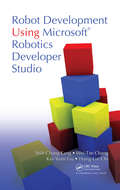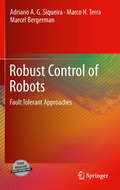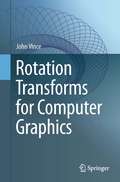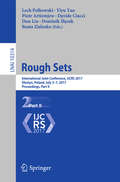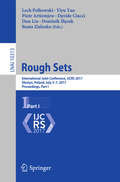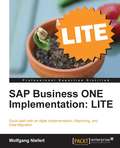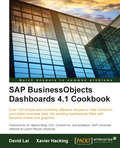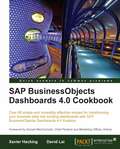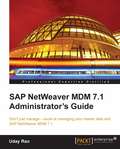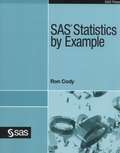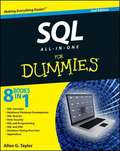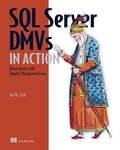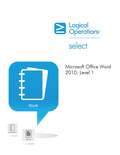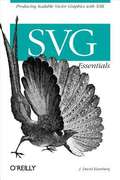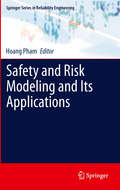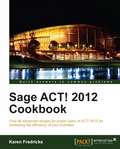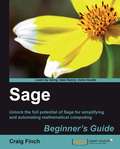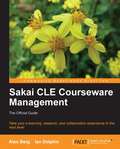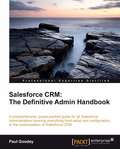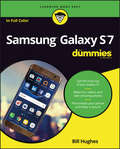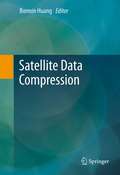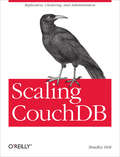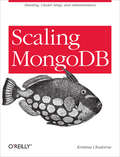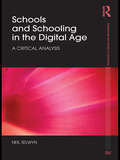- Table View
- List View
Robot Development Using Microsoft Robotics Developer Studio
by Shih-Chung Kang Wei-Tze Chang Kai-Yuan Gu Hung-Lin ChiThe Microsoft Robotics Developer Studio (MSRDS) and LEGO robots together offer a flexible platform for creating robotic systems. Designed for novices with basic programming skills, Robot Development Using Microsoft Robotics Developer Studio provides clear instructions on developing and operating robots. It includes an extensive array of examples, w
Robust Control of Robots
by Marco H. Terra Marcel Bergerman Adriano A. SiqueiraRobust Control of Robots bridges the gap between robust control theory and applications, with a special focus on robotic manipulators. It is divided into three parts: robust control of regular, fully-actuated robotic manipulators;robust post-failure control of robotic manipulators; androbust control of cooperative robotic manipulators.In each chapter the mathematical concepts are illustrated with experimental results obtained with a two-manipulator system. They are presented in enough detail to allow readers to implement the concepts in their own systems, or in Control Environment for Robots, a MATLAB®-based simulation program freely available from the authors. The target audience for Robust Control of Robots includes researchers, practicing engineers, and graduate students interested in implementing robust and fault tolerant control methodologies to robotic manipulators.
Rotation Transforms for Computer Graphics
by John VinceRotation transforms are used everywhere in computer graphics from rotating pictures in editing software, to providing an arbitrary view of a 3D virtual environment. Although the former is a trivial operation, the latter can be a challenging task. Rotation Transforms for Computer Graphics covers a wide range of mathematical techniques used for rotating points and frames of reference in the plane and 3D space. It includes many worked examples and over 100 illustrations that make it essential reading for students, academics, researchers and professional practitioners. The book includes introductory chapters on complex numbers, matrices, quaternions and geometric algebra, and further chapters on how these techniques are employed in 2D and 3D computer graphics. In particular, matrix and bivector transforms are developed and evaluated to rotate points in a fixed frame of reference, and vice versa.
Rough Sets
by Dominik Ślęzak Yiyu Yao Davide Ciucci Lech Polkowski Piotr Artiemjew Dun Liu Beata ZieloskoDecision trees and decision rule systems are widely used in different applications as algorithms for problem solving, as predictors, and as a way for knowledge representation. Reducts play key role in the problem of attribute (feature) selection. The aims of this book are (i) the consideration of the sets of decision trees, rules and reducts; (ii) study of relationships among these objects; (iii) design of algorithms for construction of trees, rules and reducts; and (iv) obtaining bounds on their complexity. Applications for supervised machine learning, discrete optimization, analysis of acyclic programs, fault diagnosis, and pattern recognition are considered also. This is a mixture of research monograph and lecture notes. It contains many unpublished results. However, proofs are carefully selected to be understandable for students. The results considered in this book can be useful for researchers in machine learning, data mining and knowledge discovery, especially for those who are working in rough set theory, test theory and logical analysis of data. The book can be used in the creation of courses for graduate students.
Rough Sets: International Joint Conference, IJCRS 2017, Olsztyn, Poland, July 3–7, 2017, Proceedings, Part I (Lecture Notes in Computer Science #10313)
by Dominik Ślęzak Yiyu Yao Davide Ciucci Lech Polkowski Piotr Artiemjew Dun Liu Beata ZieloskoDecision trees and decision rule systems are widely used in different applications as algorithms for problem solving, as predictors, and as a way for knowledge representation. Reducts play key role in the problem of attribute (feature) selection. The aims of this book are (i) the consideration of the sets of decision trees, rules and reducts; (ii) study of relationships among these objects; (iii) design of algorithms for construction of trees, rules and reducts; and (iv) obtaining bounds on their complexity. Applications for supervised machine learning, discrete optimization, analysis of acyclic programs, fault diagnosis, and pattern recognition are considered also. This is a mixture of research monograph and lecture notes. It contains many unpublished results. However, proofs are carefully selected to be understandable for students. The results considered in this book can be useful for researchers in machine learning, data mining and knowledge discovery, especially for those who are working in rough set theory, test theory and logical analysis of data. The book can be used in the creation of courses for graduate students.
SAP Business ONE Implementation: LITE
by Wolfgang NiefertWith clear instructions and plenty of screenshots, this book will provide you with the core skills you need to implement SAP Business One in your business. The material has been carefully selected from Packt's fuller 320 page SAP Business ONE Implementation. If you are a technically savvy business owner, entrepreneur, or departmental manager who wants to get their small to mid-sized company up and running with the power of an SAP ERP platform, then this book is not to be missed. No previous experience with SAP or ERP is required.
SAP BusinessObjects Dashboards 4.0 Cookbook
by David Lai Xavier HackingThis guide to SAP BusinessObjects Dashboards 4.0 (formerly Xcelsius )is a cookbook packed full of practical recipes written in a clear, concise manner with annotated examples to empower readers to quickly accomplish specific dashboard tasks. If you are a developer with a good command and knowledge of creating dashboards, but are not yet an advanced Dashboard Design user, then this is the perfect book for you. You should have a good working knowledge of Microsoft Excel as well as knowledge of basic dashboard practices, though experience of Dashboard Design as a specific dashboard tool is not essential.
SAP BusinessObjects Dashboards 4.0 Cookbook
by David Lai Xavier HackingThis guide to SAP BusinessObjects Dashboards 4.0 (formerly Xcelsius )is a cookbook packed full of practical recipes written in a clear, concise manner with annotated examples to empower readers to quickly accomplish specific dashboard tasks. If you are a developer with a good command and knowledge of creating dashboards, but are not yet an advanced Dashboard Design user, then this is the perfect book for you. You should have a good working knowledge of Microsoft Excel as well as knowledge of basic dashboard practices, though experience of Dashboard Design as a specific dashboard tool is not essential.
SAP NetWeaver MDM 7.1 Administrator's Guide
by Uday RaoThis book is written in an easy-to-read style, with a strong emphasis on real-world, practical examples with step-by-step explanations. This book will appeal to administrators who are responsible for implementing and managing SAP NetWeaver MDM in their systems. Basic knowledge of MDM is desirable, but not knowledge of SAP NetWeaver MDM. If you are already familiar with NetWeaver it will be easy for you to follow the book.
SAS Statistics by Example
by Ron CodyIn SAS Statistics by Example, Ron Cody offers up a cookbook approach for doing statistics with SAS. Structured specifically around the most commonly used statistical tasks or techniques--for example, comparing two means, ANOVA, and regression--this book provides an easy-to-follow, how-to approach to statistical analysis not found in other books. For each statistical task, Cody includes heavily annotated examples using ODS Statistical Graphics procedures such as SGPLOT, SGSCATTER, and SGPANEL that show how SAS can produce the required statistics. Also, you will learn how to test the assumptions for all relevant statistical tests. Major topics featured include descriptive statistics, one- and two-sample tests, ANOVA, correlation, linear and multiple regression, analysis of categorical data, logistic regression, nonparametric techniques, and power and sample size. This is not a book that teaches statistics. Rather, SAS Statistics by Example is perfect for intermediate to advanced statistical programmers who know their statistics and want to use SAS to do their analyses. This book is part of the SAS Press program.
SQL All-in-One For Dummies
by Allen G. TaylorThe soup-to-nuts guide on all things SQL!SQL, or structured query language, is the international standard language for creating and maintaining relational databases. It is the basis of all major databases in use today and is essential for the storage and retrieval of database information. This fun and friendly guide takes SQL and all its related topics and breaks it down into easily digestible pieces for you to understand. You'll get the goods on relational database design, development, and maintenance, enabling you to start working with SQL right away!Provides an overview of the SQL language and examines how it is integral for the storage and retrieval of database informationIncludes updates to SQL standards as well as any new featuresExplores SQL concepts, relational database development, SQL queries, data security, database tuning, and moreAddresses the relationship between SQL and programming as well as SQL and XMLIf you're looking for an up-to-date sequel to the bestelling first edition of SQL All-in-One For Dummies, then this is the book for you!
SQL Server DMVs in Action: Better Queries with Dynamic Management Views
by Ian StirkEvery action in SQL Server - queries, updates, whatever - leaves a set of tiny footprints; SQL Server records all that valuable data and makes it visible through Dynamic Management Views, or DMVs. A DBA or developer can use this incredibly detailed information to significantly improve the performance of queries and better understand what's really going on inside a SQL Server systemSQL Server DMVs in Action is a practical guide that shows how to obtain, interpret, and act on the information captured by DMVs to keep SQL Server in top shape. The 100+ samples provided in this book will help readers master DMVs and also give them a tested, working, and instantly reusable SQL code library. Purchase of the print book comes with an offer of a free PDF, ePub, and Kindle eBook from Manning. Also available is all code from the book.
SR Microsoft® Office Word 2010: Level 1
by Element KIn this course, you will examine the basic concepts of creating a document, editing a document and enhancing a document and its contents by using the Microsoft® Office Word 2010 application.
SVG Essentials
by J. EisenbergScalable Vector Graphics -- or SVG -- is the new XML-based graphics standard from the W3C that will enable Web documents to be smaller, faster and more interactive. J. David Eisenberg's insightful book takes you through the ins and outs of SVG, beginning with basics needed to create simple line drawings and then moving through more complicated features like filters, transformations, and integration with Java, Perl, and XSLT. Unlike GIFs, JPEGs or PNGs (which are bitmapped), SVG images are both resolution- and device-independent, so that they can scale up or down to fit proportionally into any size display or any Internet device -- from PDAs to large office monitors and high-resolution printers. Smaller than bitmapped files and faster to download, SVG images can be rendered with different CSS styles for each environment. They work well across a range of available bandwidths. SVG makes it possible for designers to escape the constant need to update graphics by hand or use custom code to generate bitmap images. And while SVG was created with the Web in mind, the language has a variety of other uses. SVG greatly simplifies tasks like: Creating web sites whose graphics reflect the content of the page, changing automatically if the content changes Generating graphs and charts from information stored in a wide variety of sources Exchanging detailed drawings, from architectural plans to CAD layouts to project management diagrams Creating diagrams that users can explore by zooming in and panning around Generating bitmap images for use in older browsers using simple automatable templates Managing graphics that support multiple languages or translations Creating complex animation By focusing sharply on the markup at the foundation of SVG, SVG Essentials gives you a solid base on which to create your own custom tools. Explanations of key technical tools -- like XML, matrix math, and scripting -- are included as appendices, along with a reference to the SVG vocabulary. Whether you're a graphic designer in search of new tools or a programmer dealing with the complex task of creating and managing graphics, SVG Essentials provides you with the means to take advantage of SVG.
Safety and Risk Modeling and Its Applications
by Hoang PhamSafety and Risk Modeling presents the latest theories and methods of safety and risk with an emphasis on safety and risk in modeling. It covers applications in several areas including transportations and security risk assessments, as well as applications related to current topics in safety and risk. Safety and Risk Modeling is a valuable resource for understanding the latest developments in both qualitative and quantitative methods of safety and risk analysis and their applications in operating environments. Each chapter has been written by active researchers or experienced practitioners to bridge the gap between theory and practice and to trigger new research challenges in safety and risk. Topics include: safety engineering, system maintenance, safety in design, failure analysis, and risk concept and modelling. Postgraduate students, researchers, and practitioners in many fields of engineering, operations research, management, and statistics will find Safety and Risk Modeling a state-of-the-art survey of reliability and quality in design and practice.
Sage ACT! 2011 Dashboard and Report Cookbook
by Karen Fredricks Roy LaudenslagerThis is a cookbook of easy-to-follow recipes about ACT! 2011 dashboard and report practices. If you are an ACT! end user who wants to learn about the existing reports and dashboards available in ACT! 2009, 2010, and 2011, then this book is for you. If you are an ACT! administrator who wants to make changes to ACT!'s dashboard and reporting features or a sales manager who needs to measure the effectiveness of his sales force, you will also find this book helpful. New CRM users will learn how to measure the success of their database. Prior knowledge of ACT! is not essential; however, you'll find it helpful to have good working knowledge of how to add data to ACT!, or to work with an ACT! database that has already been populated with data.
Sage ACT! 2012 Cookbook
by Karen FredricksThis is an advanced cookbook of easy-to-follow recipes about ACT! 2012 designed to transform you into an ACT! Power User. If you are an ACT! end user who wants to learn about the advanced functionality of ACT! 2012, then this book is for you. It will also be useful if you are a 2009,2010 or 2011 user, as many advanced features originate from these ACT! versions. If you are an ACT! administrator who needs to administer an ACT! database or understand Outlook integration, you will also find this book helpful. No prior ACT! knowledge is necessarily required; however, you'll find it helpful to have good working knowledge of how to add data into ACT!, or to work with an ACT! database that has already been populated with data.
Sage Beginner's Guide
by Craig FinchThis is a beginner's guide with clear step-by-step instructions, explanations, and advice. Each concept is illustrated with a complete example that you can use as a starting point for your own work. If you are an engineer, scientist, mathematician, or student, this book is for you. To get the most from Sage by using the Python programming language, we'll give you the basics of the language to get you started. For this, it will be helpful if you have some experience with basic programming concepts.
Sakai CLE Courseware Management: The Official Guide
by Ian Dolphin Alan BergThis book takes a step-by-step, practical approach and is filled with examples and illustrations. This book is written for a wide audience that includes teachers, system administrators, and first time developers. It also appeals to the Sakai open source community, potential community members, and decision makers working in education.
Salesforce CRM: The Definitive Admin Handbook
by Paul GoodeyA practical guide through which you will discover how to set up and configure the application. Along the way, you will also be presented with solutions and real-life examples on how to further improve and maintain its functionality with clear step-by-step instructions. Being highly organized and compact, this book contains detailed instructions with screenshots, diagrams, and tips that clearly describe how you can administer and configure complex Salesforce CRM functionality with absolute ease. This book is for administrators who want to develop and strengthen their Salesforce CRM skills in the areas of configuration and system management. Whether you are a novice or a more experienced admin, this book aims to enhance your knowledge and understanding of the Salesforce CRM platform. By the end of the book, you will be ready to configure and administer a Salesforce CRM system in a real-world environment which fully supports your business needs.
Samsung Galaxy S For Dummies
by Bill HughesColorful guide to getting more out of your Galaxy S smartphone!Now that you've got your new Galaxy S smartphone, you've got to figure out how to use it! If you're baffled by the technology and the documentation, this book can help. Written in the fun but clear and thorough For Dummies style, this book answers all your questions. You'll find out how to do all the fun stuff: texting, social networking, using the camera, how to watch movies, and more. And you'll also learn how to handle the "housekeeping": synching your phone with your PC, using business applications, downloading apps, accessing the calendar, what all the widgets mean, and much more.Helps you get up to speed on any Samsung Galaxy S smartphone, including the Fascinate, Epic, Captivate, Vibrant, and other Galaxy S phonesClarifies the basics of how to use the phone, how the technology works, how to configure everything, and how to make it totally yoursDelivers a full slate of how-tos, tricks, features, and techniques, all in full colorCovers setup and configuration, texting, e-mailing, taking and sharing pictures, playing games, buying and installing apps, personal and business apps, and moreIncludes tips on making the most of multimedia features--games, music, movies, photos, and moreYou'll get gobs more from your Galaxy S with the help of Samsung Galaxy S For Dummies.
Satellite Data Compression
by Bormin HuangSatellite Data Compression covers recent progress in compression techniques for multispectral, hyperspectral and ultra spectral data. A survey of recent advances in the fields of satellite communications, remote sensing and geographical information systems is included. Satellite Data Compression, contributed by leaders in this field, is the first book available on satellite data compression. It covers onboard compression methodology and hardware developments in several space agencies. Case studies are presented on recent advances in satellite data compression techniques via various prediction-based, lookup-table-based, transform-based, clustering-based, and projection-based approaches. This book provides valuable information on state-of-the-art satellite data compression technologies for professionals and students who are interested in this topic. Satellite Data Compression is designed for a professional audience comprised of computer scientists working in satellite communications, sensor system design, remote sensing, data receiving, airborne imaging and geographical information systems (GIS). Advanced-level students and academic researchers will also benefit from this book.
Scaling CouchDB: Replication, Clustering, and Administration
by Bradley HoltThis practical guide offers a short course on scaling CouchDB to meet the capacity needs of your distributed application. Through a series of scenario-based examples, this book lets you explore several methods for creating a system that can accommodate growth and meet expected demand. In the process, you learn about several tools that can help you with replication, load balancing, clustering, and load testing and monitoring.Apply performance tips for tuning your databaseReplicate data, using Futon and CouchDB’s RESTful interfaceDistribute CouchDB’s workload through load balancingLearn options for creating a cluster of CouchDB nodes, including BigCouch, Lounge, and PillowConduct distributed load testing with Tsung
Scaling MongoDB: Sharding, Cluster Setup, and Administration
by Kristina ChodorowCreate a MongoDB cluster that will grow to meet the needs of your application. With this short and concise book, you'll get guidelines for setting up and using clusters to store a large volume of data, and learn how to access the data efficiently. In the process, you'll understand how to make your application work with a distributed database system.Scaling MongoDB will help you:Set up a MongoDB cluster through shardingWork with a cluster to query and update dataOperate, monitor, and backup your clusterPlan your application to deal with outagesBy following the advice in this book, you'll be well on your way to building and running an efficient, predictable distributed system using MongoDB.
Schools and Schooling in the Digital Age: A Critical Analysis (Foundations and Futures of Education)
by Neil SelwynThis book presents a wide-ranging and critical exploration of a topic that lies at the heart of contemporary education. The use of digital technology is now a key feature of schools and schooling around the world. Yet despite its prominence, technology use continues to be an area of education that rarely receives sustained critical attention and thought, especially from those people who are most involved and affected by it. Technology tends to be something that many teachers, learners, parents, policy-makers and even academics approach as a routine rather than reflective matter. Tackling the wider picture, addressing the social, cultural, economic, political and commercial aspects of schools and schooling in the digital age, this book offers to make sense of what happens, and what does not happen, when the digital and the educational come together in the guise of schools technology. In particular, the book examines contemporary schooling in terms of social justice, equality and participatory democracy. Seeking to re-politicise an increasingly depoliticised area of educational debate and analysis, setting out to challenge the many contradictions that characterise the field of education technology today, the author concludes by suggesting what forms schools and schooling in the digital age could, and should, take. This is the perfect volume for anyone interested in the application and use of technology in education, as well as the education policy and politics that surround it; many will also find its innovative proposals for technology use an inspiration for their own teaching and learning.
